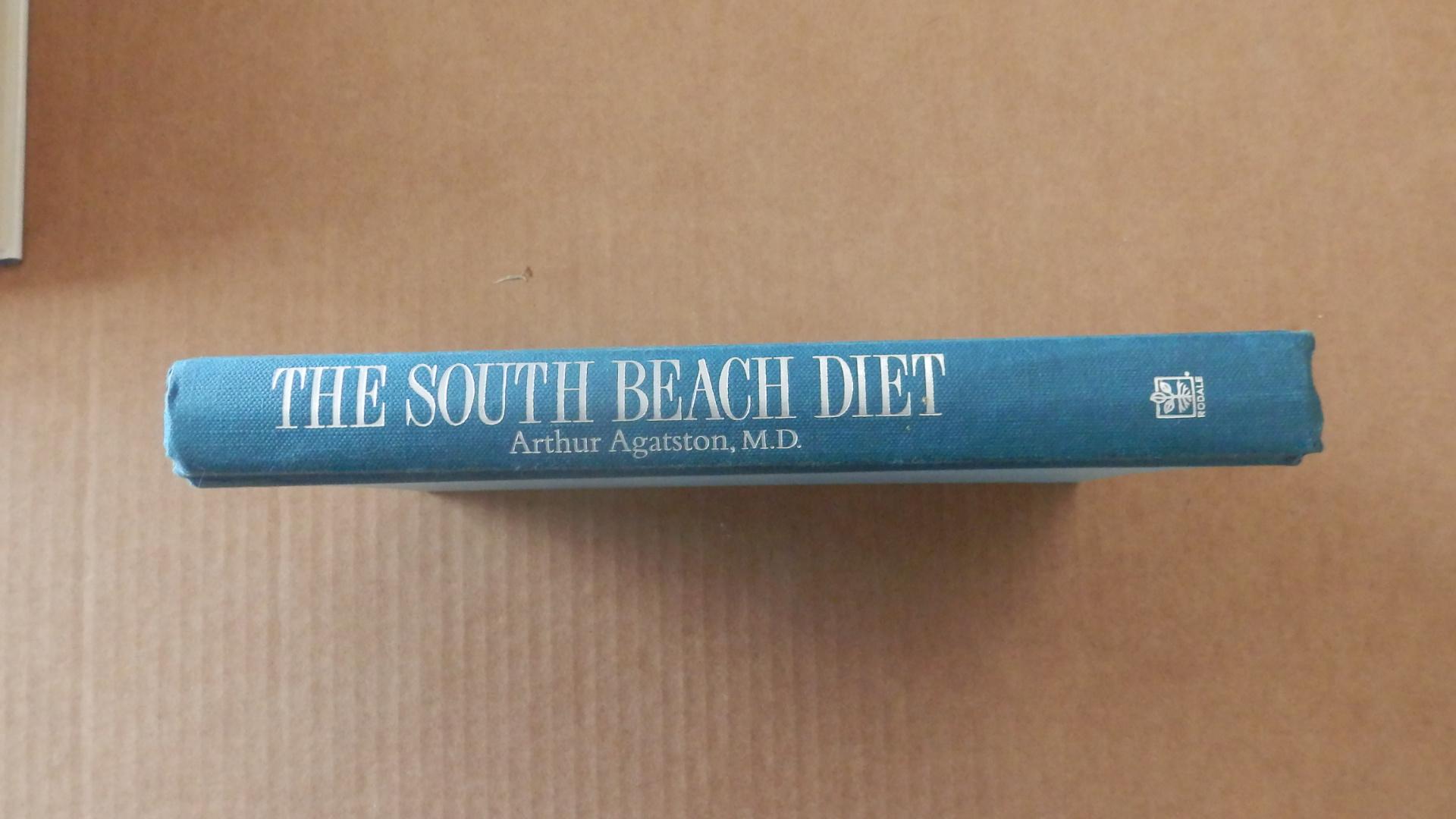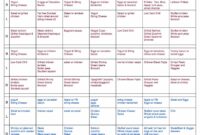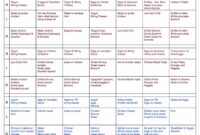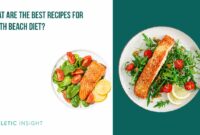Dr. Agatston’s South Beach Diet offers a compelling approach to weight loss and improved health, emphasizing healthy fats and complex carbohydrates over restrictive calorie counting. This diet, unlike many others, focuses on sustainable lifestyle changes rather than short-term fixes, aiming to re-educate eaters about food choices and their impact on blood sugar and overall well-being. Its phased approach allows for gradual adjustments, making it more manageable for long-term adherence.
The diet’s three phases—initial, transition, and maintenance—each build upon the previous one, progressively introducing a wider variety of foods while still prioritizing nutrient-rich options. The South Beach Diet is distinguished by its allowance of healthy fats and its careful selection of carbohydrates, steering clear of those that trigger rapid blood sugar spikes. This approach aims to stabilize insulin levels, promoting weight loss and potentially reducing the risk of chronic diseases. This guide will delve into the details of each phase, provide sample meal plans, and address common concerns regarding this popular dietary approach.
Meal Planning and Recipe Ideas for the South Beach Diet
The South Beach Diet emphasizes healthy fats and lean proteins while limiting refined carbohydrates and sugars. Successful adherence requires careful meal planning and creative recipe selection. This section provides examples and tips to help you navigate the diet’s phases effectively.
Breakfast Recipes
Breakfast is crucial for setting the tone for the day. Choosing the right foods can help you avoid cravings and maintain energy levels throughout the morning. The following recipes are examples of quick and easy South Beach-friendly options.
- Egg and Avocado Toast: Whole-wheat toast topped with scrambled eggs and mashed avocado. This provides healthy fats, protein, and fiber.
- Berry Smoothie: Blend unsweetened almond milk, berries (strawberries, blueberries, raspberries), a scoop of protein powder, and a handful of spinach for a quick and nutritious breakfast.
- Greek Yogurt with Nuts and Seeds: Plain Greek yogurt topped with a mix of almonds, chia seeds, and a drizzle of honey (in moderation, especially during Phase 1).
Lunch Recipes
Lunch should be satisfying and keep you feeling full until dinner. These recipes offer a balance of protein, healthy fats, and fiber.
- Tuna Salad Lettuce Wraps: Mix canned tuna (in water), chopped celery, red onion, and a light vinaigrette. Serve in crisp lettuce cups instead of bread.
- Chicken Salad with Mixed Greens: Grilled chicken breast, chopped mixed greens, avocado slices, and a light lemon-herb dressing.
- Leftovers from Dinner: Repurposing dinner leftovers is a simple and efficient way to have a quick and healthy lunch.
Dinner Recipes
Dinner is an opportunity to enjoy more substantial meals. These recipes offer delicious and satisfying options that align with the South Beach Diet guidelines.
- Baked Salmon with Roasted Vegetables: Season salmon fillets and bake with asparagus, broccoli, and bell peppers. This provides lean protein and a variety of vitamins and minerals.
- Chicken Stir-fry: Stir-fry chicken breast with low-sodium soy sauce, garlic, ginger, and a variety of vegetables like broccoli, carrots, and snap peas. Serve over cauliflower rice.
- Lean Ground Turkey Chili: A hearty and flavorful chili made with lean ground turkey, beans (in moderation, depending on the phase), tomatoes, and chili spices.
Snack Recipes
Snacks are important for preventing overeating at mealtimes. These options will keep you satisfied and on track.
- Handful of Almonds or Walnuts: A great source of healthy fats and protein.
- Hard-boiled Eggs: A convenient and protein-rich snack.
- Small bowl of Berries: A naturally sweet and low-calorie snack.
Tips for Quick and Easy South Beach Diet Meals
Preparing quick and easy meals is key to long-term success. Prioritize simple recipes that require minimal cooking time and readily available ingredients. Batch cooking on the weekends and prepping ingredients in advance can significantly reduce weeknight cooking stress. Consider using pre-cut vegetables and lean protein sources to save time. Always read food labels carefully to ensure that products align with the diet’s guidelines.
Sample Weekly Meal Plan
This sample plan provides a framework; adjust portions and specific dishes based on your individual needs and preferences. Remember to adjust the plan according to the specific phase of the South Beach Diet you are following.
Monday: Breakfast: Egg and Avocado Toast; Lunch: Tuna Salad Lettuce Wraps; Dinner: Baked Salmon with Roasted Vegetables
Tuesday: Breakfast: Berry Smoothie; Lunch: Leftovers from Dinner; Dinner: Chicken Stir-fry
Wednesday: Breakfast: Greek Yogurt with Nuts and Seeds; Lunch: Chicken Salad with Mixed Greens; Dinner: Lean Ground Turkey Chili
Thursday: Breakfast: Egg and Avocado Toast; Lunch: Tuna Salad Lettuce Wraps; Dinner: Baked Salmon with Roasted Vegetables
Friday: Breakfast: Berry Smoothie; Lunch: Leftovers from Dinner; Dinner: Chicken Stir-fry
Saturday: Breakfast: Greek Yogurt with Nuts and Seeds; Lunch: Leftovers from Dinner; Dinner: A restaurant meal (choose wisely, focusing on lean protein and vegetables)
Sunday: Breakfast: Omelette with spinach and mushrooms; Lunch: Large salad with grilled chicken; Dinner: Leftovers from Saturday or a new South Beach-friendly recipe.
Adapting the South Beach Diet to Individual Needs
The South Beach Diet, while effective for many, requires personalization to align with individual dietary needs, preferences, and lifestyles. Successful weight management hinges not just on adhering to the dietary guidelines, but also on adapting them to create a sustainable and enjoyable approach. This involves considering factors such as vegetarian or vegan preferences, incorporating regular exercise, and developing strategies to navigate potential challenges.
Adapting the South Beach Diet for Vegetarian and Vegan Diets
Adapting the South Beach Diet to vegetarian or vegan lifestyles is achievable with careful planning. The core principles of focusing on lean protein, healthy fats, and low-glycemic carbohydrates remain. For vegetarians, ample protein sources include legumes (lentils, beans, chickpeas), tofu, tempeh, Greek yogurt, eggs (depending on the type of vegetarianism), and various nuts and seeds. Vegans can rely on similar sources, focusing on protein-rich plant-based alternatives like seitan and incorporating a wider variety of legumes, nuts, and seeds to meet protein requirements. Careful attention should be paid to ensure adequate intake of vitamin B12, often supplemented in vegan diets. Finding South Beach Diet-friendly recipes that are plant-based is relatively straightforward, and many resources are available online.
Incorporating Exercise into a South Beach Diet Plan
Regular physical activity is crucial for overall health and weight management, complementing the South Beach Diet’s nutritional approach. The recommended exercise regimen includes a combination of cardiovascular exercise (like brisk walking, jogging, swimming, or cycling) and strength training. Aim for at least 150 minutes of moderate-intensity cardio per week, along with strength training exercises targeting all major muscle groups at least twice a week. This balanced approach not only aids in weight loss but also improves muscle mass, bone density, and overall fitness. Starting slowly and gradually increasing intensity and duration is advisable, especially for beginners. Finding enjoyable activities is key to long-term adherence to an exercise program. For example, joining a walking group, taking dance classes, or playing a team sport can make exercise more engaging and sustainable.
Managing Challenges and Setbacks
Maintaining adherence to any diet can be challenging. Setbacks are common, but they shouldn’t derail the entire process. Planning for potential challenges, such as social events or travel, is crucial. Preparing healthy snacks and meals in advance can prevent impulsive unhealthy choices. Identifying potential triggers for unhealthy eating habits and developing coping mechanisms is also essential. For example, if stress leads to overeating, incorporating stress-reduction techniques like yoga or meditation can be beneficial. If cravings become overwhelming, allow for occasional small indulgences, but emphasize portion control and getting back on track quickly. Seeking support from friends, family, or a registered dietitian can provide encouragement and guidance during difficult times.
Maintaining Weight Loss After the South Beach Diet
Sustaining weight loss after completing the South Beach Diet requires a gradual transition to a balanced and healthy lifestyle. The principles of the diet—emphasizing whole, unprocessed foods, lean proteins, and healthy fats—should be maintained long-term. However, the strict limitations of the initial phases can be relaxed gradually, allowing for a wider variety of foods while maintaining a focus on healthy choices. Regular exercise and mindful eating habits are vital for long-term weight management. It’s important to avoid reverting to old eating habits and to continue tracking progress, making adjustments as needed. Regular check-ins with a healthcare professional can help monitor progress and address any challenges that may arise. The goal is not to be on a diet indefinitely, but rather to adopt a healthy lifestyle that supports long-term weight maintenance and overall well-being.
Closure
Ultimately, the Dr. Agatston South Beach Diet presents a flexible and potentially effective pathway to weight management and improved cardiovascular health. While individual results may vary, the diet’s emphasis on sustainable lifestyle changes, mindful food choices, and the inclusion of healthy fats distinguishes it from many other restrictive diets. Remember that consulting a healthcare professional before starting any new diet is crucial to ensure it aligns with your individual health needs and goals. The key to long-term success lies in understanding the principles behind the diet and adapting it to fit your lifestyle for sustained, healthy weight loss.




